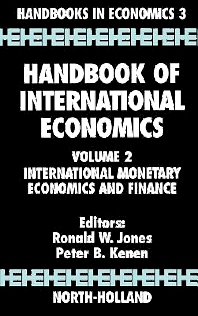Books in International economics
Books in International economics
- 2nd Edition
- May 31, 1995
- Michael Atkin
- English
- eBook9 7 8 1 8 4 5 6 9 2 8 2 7

The International Grain Trade
- 1st Edition
- February 28, 1995
- Gilbert Durieux + 2 more
- English
- eBook9 7 8 1 8 4 5 6 9 2 7 7 3

French Financial Markets
- 1st Edition
- January 1, 1995
- David Long
- English
- eBook9 7 8 1 8 5 5 7 3 8 5 2 2

Oil Trading Manual
- 1st Edition
- November 30, 1994
- Vincent Rich
- English
- eBook9 7 8 0 8 5 7 0 9 9 9 4 5

The International Lead Trade
- 1st Edition
- February 28, 1993
- Tony Warwick-Ching
- English
- eBook9 7 8 1 8 4 5 6 9 9 1 7 8

The International Gold Trade
- 1st Edition
- January 1, 1992
- Simon Clow
- English
- eBook9 7 8 0 8 5 7 0 9 9 9 6 9

The International Nickel Trade
- 1st Edition
- Volume 7
- January 15, 1991
- K. Burger + 3 more
- English
- eBook9 7 8 0 4 4 4 5 9 9 5 5 1

Agricultural Economics and Policy: International Challenges for the Nineties
- 1st Edition
- Volume 2
- January 1, 1985
- R.W. Jones + 1 more
- English
- Hardback9 7 8 0 4 4 4 8 6 7 9 3 3
- eBook9 7 8 0 0 8 0 5 5 0 3 7 4

Handbook of International Economics
- 1st Edition
- Volume 1
- January 1, 1984
- P.B. Kenen + 1 more
- English
- Paperback9 7 8 0 4 4 4 7 0 4 2 2 1
- Hardback9 7 8 0 4 4 4 8 6 7 9 2 6
- eBook9 7 8 0 0 8 0 5 7 0 8 6 0

Handbook of International Economics
- 6th Edition
- January 1, 1900
- John T. Hansen
- French
